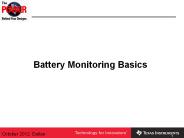Faults: Basics - PowerPoint PPT Presentation
1 / 11
Title:
Faults: Basics
Description:
Faults: Basics. Goal: To understand and use the basic terminology for ... Direction of vector (slip-line) expressed as trend and plunge or rake in fault plane ... – PowerPoint PPT presentation
Number of Views:132
Avg rating:3.0/5.0
Title: Faults: Basics
1
Faults Basics
Goal To understand and use the basic terminology
for describing faults.
2
- Dip-slip faults Slip up or down the dip.
- Normal fault Hanging wall down indicates
extension - Reverse fault Hanging wall up indicates
shortening
Reverse
Normal
3
Strike-slip faults
- Slip parallel with earths surface
- Typically have subvertical dip
- Sense of motion
- Dextral right-lateral right-handed
- Sinistral left-lateral left-handed
4
Oblique-slip faults
- Strike-slip and dip-slip components
- Most faults are oblique-slip, but are often
dominantly strike-slip or dip-slip
5
Slip vs. Separation
- Slip Total movement along fault surface.
- Vector lying in fault surface
- Direction of vector (slip-line) expressed as
trend and plunge or rake in fault plane - Separation Total apparent offset along fault
when viewed in 2-D (either map or cross section).
6
Same separation, different slip
- Dip-slip fault
- Strike-slip fault
7
- To determine slip, you need a piercing point
- Piercing point Line that intersects fault
surface and is off-set by fault - Match hanging-wall cutoff with footwall cutoff
8
Fault Rocks
- Frictional/brittle fault rocks Mechanical
disaggregation and grinding - Plastic fault rocks Plastic flow of minerals at
atomic scale - grain-size reduction due to deformation-driven
dynamic recrystallization
9
Breccia/gouge zone
10
1
3
2
11
Brittle-plastic transition































